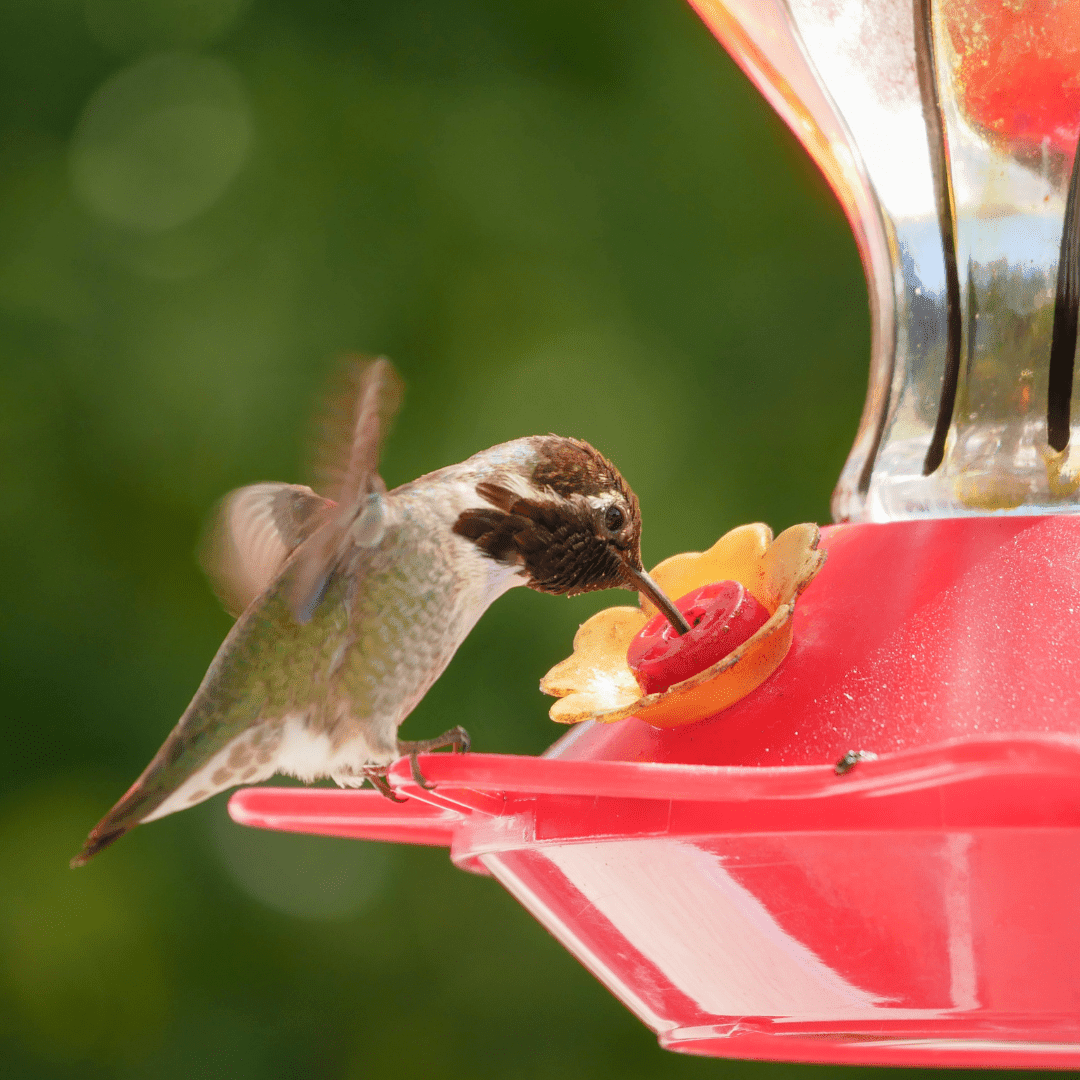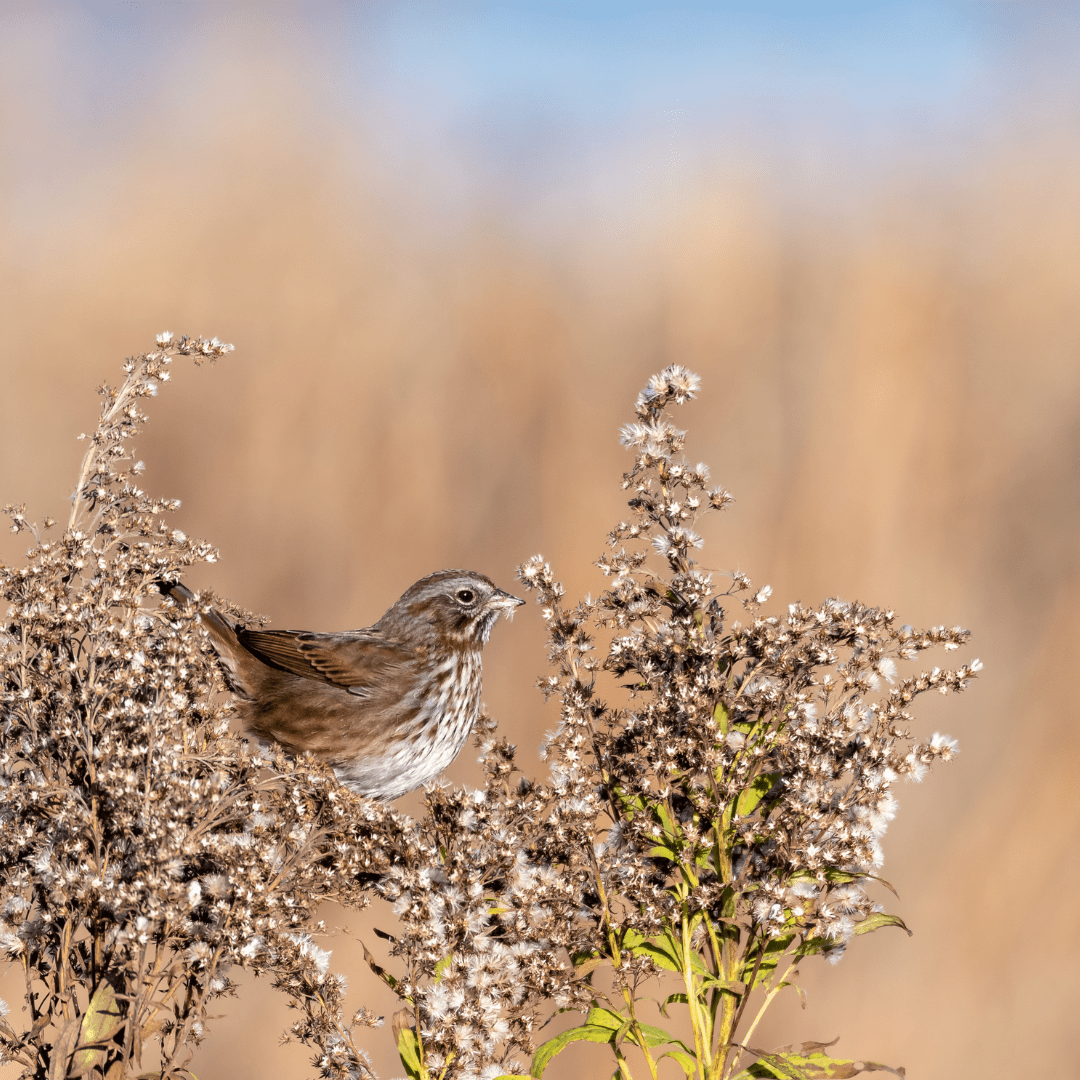Winterize your bird bath.
What Is Included in This Post:
- Introduction: The Importance of Winterizing Your Bird Bath
- Understanding the Effects of Winter on Bird Baths
- Preparing Your Bird Bath for Winter: Cleaning and Maintenance
- Insulating Your Bird Bath: Best Practices and Materials
- Implementing Ice-Busting Techniques: Heating Options and Strategies
- The Role of Water Flow in Preventing Freezing
- Additional Tips for Winterizing Your Bird Bath
- Conclusion: Ensuring a Safe and Accessible Water Source for Birds in Winter
- Frequently Asked Questions
As winter approaches, it is crucial to take steps to protect and maintain your bird bath. During the cold months, freezing temperatures can cause significant damage to bird baths, making them inaccessible for our feathered friends. It is essential to winterize your bird bath to ensure that birds have a safe and reliable source of water during the winter season. This article will guide you through the best ice-busting techniques and provide valuable insights into how to keep your bird bath functional and accessible throughout the winter months.
This is a pinnable post. Tap or hover over any image in this post to pin to your Pinterest Boards.

Introduction: The Importance of Winterizing Your Bird Bath
Winter is a magical time of year, filled with snowflakes, cozy fires, and hot chocolate. But as the temperatures drop, it’s important not to forget about our feathered friends. Just like us, birds need access to fresh water, even in the chilly winter months. That’s where the importance of winterizing your bird bath comes in. By taking a few easy and practical steps, you can ensure that your little avian visitors stay hydrated and happy all winter long. Trust me, they’ll thank you with their beautiful songs.
Understanding the Effects of Winter on Bird Baths

Picture this: it’s a frosty winter morning, and your bird bath is covered in a solid sheet of ice. While it may look picturesque, it spells trouble for our feathered friends. Freezing temperatures can cause structural damage to bird baths, such as cracks or even complete breakage. And let’s not forget about the impact of ice formation on birds’ access to water. While they may be able to peck through the ice for a quick sip, it’s far from ideal. Just like us trying to eat ice cream with a toothpick – not exactly easy or satisfying.
Preparing Your Bird Bath for Winter: Cleaning and Maintenance
Before you winterize your bird bath, it’s important to give it a little TLC. Start by cleaning your bird bath thoroughly. No bird wants to take a dip in a grime-filled bathtub, right? Remove any debris, such as leaves or twigs, and give it a good scrub. And if you spot any existing damage, be sure to repair it before the icy winds start blowing. Your bird bath will be spick and span, ready to face the winter like a champ.
Insulating Your Bird Bath: Best Practices and Materials

Now, let’s talk insulation. Just like we snuggle up in warm blankets during winter, our bird baths deserve a little cocooning too. Insulating your bird bath will help prevent water from freezing, ensuring that our feathered friends can enjoy a refreshing drink whenever they please. Choose appropriate insulation materials such as foam, bubble wrap, or even old towels. Wrap your bird bath snugly, making sure to cover the edges and the base. It’s like giving your bird bath a winter sweater – stylish and functional. It is good practice to cover your bird bath at night during freezing temperatures.
Birds also need warm nesting materials in the winter. Consider creating a fun nesting ball to hang near your bird bath filled with nesting materials to gather to make their nests to be able to stay warm. Consider also adding a bird feeder to help them stay well-fed and nourished during the cold months when food is hard to find. You can find a complete tutorial on how to make a bird nesting ball and bird feeder in my other posts.
How to Make Your Own DIY Bird Nesting Balls
How to Make a Bird Feeder Obelisk Garden
Top 5 Affordable Bird Feeder Cameras Under $100
Implementing Ice-Busting Techniques: Heating Options and Strategies
Adding a floating rubber ducky or plastic ping-pong ball to your bird bath in the winter helps keep the water from forming ice. The rubber duck or ping-pong ball will float around preventing the water from freezing.

When it comes to keeping your bird bath from turning into an ice rink during winter, there are several heating options you can consider. Let’s take a look at each and weigh their pros and cons.
Heated Bird Bath

One popular option is a heated bird bath. These come with built-in heating elements that keep the water at a pleasant temperature for our feathered friends. They are easy to use and require minimal setup. However, they can be a bit pricey compared to other alternatives.
Heated Bird Bath Insert

Another option is a heated birdbath insert. These are heating elements that you can place in your existing bird bath to keep the water from freezing. They are usually more affordable and energy-efficient, but they may require some extra maneuvering to fit properly.
Submersible Bird Bath Heater

You can also use a submersible aquarium heater. These heaters are designed to maintain stable water temperatures in bird baths. Just make sure to follow the manufacturer’s instructions.
Regardless of the heating method you choose, it’s important to use them safely. Make sure to follow all safety guidelines, keep electrical cords away from water, and regularly check for any signs of wear or damage.
The Role of Water Flow in Preventing Freezing
When it comes to preventing freezing in your bird bath, water flow plays a crucial role. Moving water is less likely to freeze compared to stagnant water.
Solar Bird Bath Fountain

Consider adding a small pump or bubbler to your bird bath. These devices create a gentle movement in the water, preventing it from becoming stagnant and reducing the chances of freezing. They also have the added benefit of attracting more birds, as the sound of moving water is a magnet for our feathered friends.
Speaking from experience in using these fun solar fountains in bird baths, it is a good idea to anchor the fountain down. This can be done using heavy rocks to keep the fountain from floating and in the middle. This is because mine have in the past floated to the sides of the bird bath and all of the water was flowing over the sides and soon emptying out the whole bird bath. I learned this lesson the hard way!
Remember to keep an eye on your bird bath during winter and make sure the water flow remains consistent. If the water flow becomes weak or stops altogether, it may be a sign that the pump or bubbler needs cleaning or maintenance. Regularly check for any debris or ice buildup that could hinder water movement.
Additional Tips for Winterizing Your Bird Bath
In addition to heating options and water flow, here are a few extra tips to consider when winterizing your bird bath:
- Place your bird bath in a strategic location. Position it in an area with ample sunlight to help maintain warmer temperatures. Avoid placing it in areas with excessive wind or shade, as these can accelerate freezing.
- Opt for bird bath heaters with thermostats. These devices automatically turn on when the temperature drops below a certain point and turn off when it rises. They provide an energy-efficient way to keep the water from freezing and prevent overheating.
- Monitor and adjust your winterization techniques. Keep a close eye on the weather conditions and adjust your strategies accordingly. If temperatures drop significantly, consider adding extra insulation or covering the bird bath overnight to provide additional protection against freezing.
Conclusion: Ensuring a Safe and Accessible Water Source for Birds in Winter
Winter can be a challenging time for our feathered friends, and providing a safe and accessible water source is crucial for their survival. By implementing these ice-busting techniques, ensuring water flow, and following additional tips for winterizing your bird bath, you can create an inviting oasis for birds even in the coldest months.
Remember, winterization is an ongoing process, and it may require some trial and error to find the best approach for your bird bath. With a little creativity and a lot of care, you can make sure your bird bath remains a winter hangout spot for our avian pals.
By implementing the ice-busting techniques and winterization strategies outlined in this article, you can ensure that your bird bath remains a safe and accessible water source for birds during the winter months. Remember to clean and maintain your bird bath, insulate it properly, and consider implementing heating options or water movement to prevent freezing. By taking these steps, you are not only providing a vital resource for birds, but also enhancing your enjoyment of birdwatching during the colder season. So, let’s do our part in creating a bird-friendly environment even in the harshest of winter conditions. Stay warm and keep those birdbaths ice-free!

Frequently Asked Questions
1. Can I leave my bird bath outside during winter without winterizing it?
Leaving your bird bath outside during winter without winterizing can lead to various issues. Freezing temperatures can cause the water in the bird bath to freeze, making it inaccessible for birds. Additionally, the expansion of ice can damage the structure of the bird bath. It is strongly recommended to winterize your bird bath to protect it and ensure a safe water source for birds.
2. What is the best way to insulate a bird bath?
Insulating your bird bath is essential to prevent freezing. One of the best ways to insulate it is by using insulation materials such as foam or bubble wrap. Wrap the insulation material around the exterior of the bird bath, ensuring it is securely in place. This will help to retain heat and prevent freezing. Additionally, you can consider using an insulated bird bath cover or placing the bird bath in a sheltered area to provide further protection.
3. Are there any risks in using heating devices for my bird bath?
While using heating devices for your bird bath can be effective in preventing freezing, there are some risks to be aware of. Make sure to follow the manufacturer’s instructions and safety guidelines when using heating devices. Ensure that the device is suitable for outdoor use and has appropriate safety features such as automatic shut-off. Also, keep cords out of reach of birds and other animals to prevent entanglement. Regularly inspect the device for any signs of damage or malfunction.
4. Should I continue to clean my bird bath during winter?
Yes, it is important to continue cleaning your bird bath during winter. Even though birds may visit less frequently during this time, maintaining a clean bird bath is crucial for their health and well-being. Remove any debris, leaves, or ice that accumulates in the bird bath. Regular cleaning helps to prevent the growth of bacteria and keeps the water source fresh and inviting for birds.
Summary
I hope I have inspired you to winterize your bird baths with these tips and products.
If you were encouraged by this post, I invite you to check out my FREE Printables Page for fun free printables, planners, and charts.
ENTER MY FREE Printables Page HERE
Here are some more of my composting and gardening inspiration posts to check out!
How to Make Your Own DIY Bird Nesting Balls
How to Make a Bird Feeder Obelisk Garden
Top 5 Affordable Bird Feeder Cameras Under $100
How to Grow a Fall Garden: 9 Best Fall Crops
How to Start Composting for the Garden: A Step-by-Step Guide
Blessings,
The Off Grid Barefoot Girl





